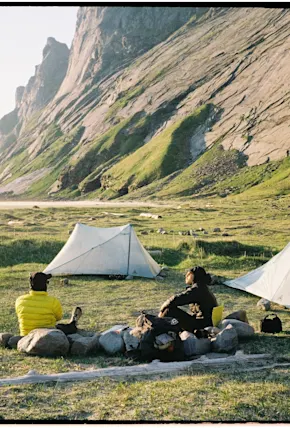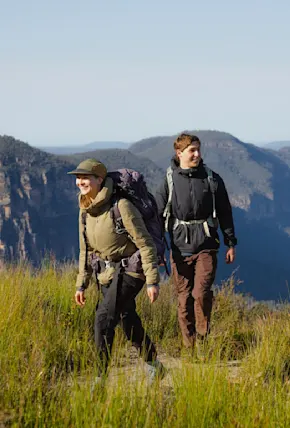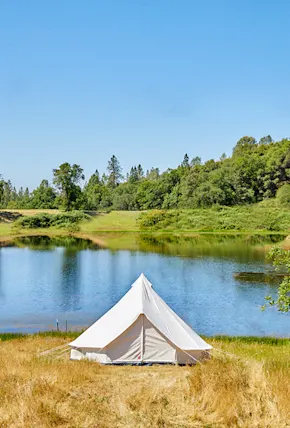The most essential item for any camping trip is the tent. It provides you with a home away from home. It keeps you safe and dry when the weather turns sideways, and it gives you a place to relax and hang out when on a family camping trip (or need a moment away from said family.)
There are plenty of different styles and kinds of tents, from ultralight backpacking tents and spacious and strong family camping tents to large, durable, geodesic dome-inspired expedition tents. Even rooftop tents for your 4x4 rig. After nearly a century of modern innovation, tents these days have a multitude of added features that are designed to make your next trip to the backcountry—or car-accessible campsite—fun, enjoyable, and most of all, comfortable.
To aid in your search for the best tent for you and your outdoor goals, we’ve rounded up our top 10 picks for the best tents for car camping, backpacking, and thru-hiking, with a range of group sizes and budgets in mind. And below that, is a proper deep dive tent guide breaking down common tent materials and sizes, what features to look for, and answering FAQs to keep you on the right path. Dig in and have fun.
10 Tents for All Types of Camping

Best Lightweight Tent for Thru-hiking: Hyperlite Mountain Gear Ultamind 2
Weighing in at only 1.17 pounds, the ultra-light Ultamind 2 will barely add any weight to your pack on those long-haul treks. Made with waterproof materials for year-round adventuring, the pyramid shape also allows for easy set-up and breakdown.
Price: Starting at $735

Best Backpacking Tent: Big Agnes Copper Spur UL2
Ideal for thru-hiking and other fast-and-light backcountry adventures thanks to its lightweight but sturdy build and multi-function design (the awning is propped up with the aid of trekking poles), the three-season, two-person also sets up quickly and easily thanks to Big Agnes’ proprietary TipLok Tent Buckle corner construction.
Price: $450

Best One-person Tent: Marmot Tungsten
From breathable, no-see-um mesh and waterproofed fabrics to an included footprint and vertical-walled zone construction to maximize indoor space, the Marmot Tungsten’s compact, user-friendly design makes it the ideal companion for solo adventurers up to three seasons out of the year.
Price: $193

Best Two-person Tent: MSR Hubba Hubba NX 2-person Backpacking Tent
Featuring an attractive look and made with cutting-edge, ultra-durable materials like MSR’s specialty Xtreme Shield™ Waterproof coating, the Hubba Hubba NX offers three-season protection from rain, sun, and light wind. It also weighs a feathery three pounds, eight ounces thanks to lightweight materials like aerospace composite poles.
Price: $450

Best Three-person Tent: Aspect 3 Tent
From one of the most trusted names in mountaineering gear comes the three-season technical but spacious Aspect 3. With a lofty domed canopy and enough interior space for up to three people, it uses DAC Featherlight™ NFL poles for a lightweight build and a unique canopy-to-pole attachment system that compresses easily for packing. There are also two entrances to prevent scrambling over your tent mates.
Price: $480

Best 4-season Tent: Hilleberg Saitari
An industry standard for extreme adventuring, the Hilleberg Saitari’s ultra-strong construction and proprietary weatherproofed materials provide four-season protection against everything from scorching sun to wailing winter storms. Standing just over four feet tall, it hunkers close to the ground for wind protection and has large vestibules to keep bad weather out and offer gear storage. For being so big though (there is ample interior space to wait out long storms), it pitches surprisingly easily thanks to a self-supporting system.
Price: $2,100

Best Cheap Tent for Families: Coleman Sundome
Affordable, spacious, and capable of being set up within ten minutes, the Coleman Sundome may not be the most technical or light tent out there, but it delivers with reliability and timelessly classic tent design. The large windows and ground vent keep the interior well-ventilated, and an included rainfly with door awning keeps you dry from summer downpours.
Price: $50

Best Tent for Big Groups: Coleman Skydome 10-Person Tent
Big enough to hold a crew of ten, the cabin-style Coleman Skydome features near-vertical walls and lofted ceiling for maxmized space. Plus WeatherTec™ technology to keep the elements out, making this a large and reliable structure for outdoor gatherings and events in good or bad weather.
Price: $270

Best Expedition Tent: The North Face 2-Meter Dome
Standing nearly seven feet tall and patterned in yellow triangles to stand out against white-out mountain landscapes, this geodesic dome is the golden standard for an alpine basecamp. Specially engineered with heavy-duty nylon fabric with durable aluminum poles, you’ll be protected from even the most extreme weather, and with cavernous indoor space for your crew and gear.
Price: $5,500

Best Rooftop/Car Attachment Tent: Thule x Tepui Foothill Tent
Unlike other car roof tents, the Thule x Tepui Foothill uses up only half of your roof rack, leaving extra room for bikes, kayaks, or other gear. With a comfy mattress, easy setup, and ladder access, it’s capable of housing two people and supporting up to 400 pounds.
Price: $1,700
The Best Tent Fabric and Materials
A few different materials are used to construct camping tents. All of them, of course, have their benefits and their drawbacks. The type of material that you go for depends on various factors, including the conditions in which you will be camping and how you will get there.
Nylon and Polyester
Most tents are made using either nylon or polyester. The difference between the two is that polyester is generally more durable than nylon. Having said that, nylon is still a durable material. Polyester is usually used for family tents, while nylon is often used for backpacking tents–because it is lightweight. Nylon and polyester are popular choices of material for tents for various reasons.
Both nylon and polyester are man-made fabrics that are generally less expensive to produce than natural fabrics. These materials are also lighter and less bulky than fabrics made from natural materials, making packing and transporting easier. Tents made of nylon or polyester often have rip-stop patterns incorporated into the weave of the fibers. These areas are slightly thicker than other areas of the tent and are designed to stop any tears or small holes from getting too big.
On the other hand, tents made of nylon or polyester usually aren't insulated very well. This makes them less practical to use in more extreme weather conditions. They are also less breathable and could have condensation and moisture build-up inside. Nylon and polyester are sensitive to ultraviolet light, and exposure to sunlight can shorten the lifespan of your tent (yes that sounds ridiculous but it’s true).



















